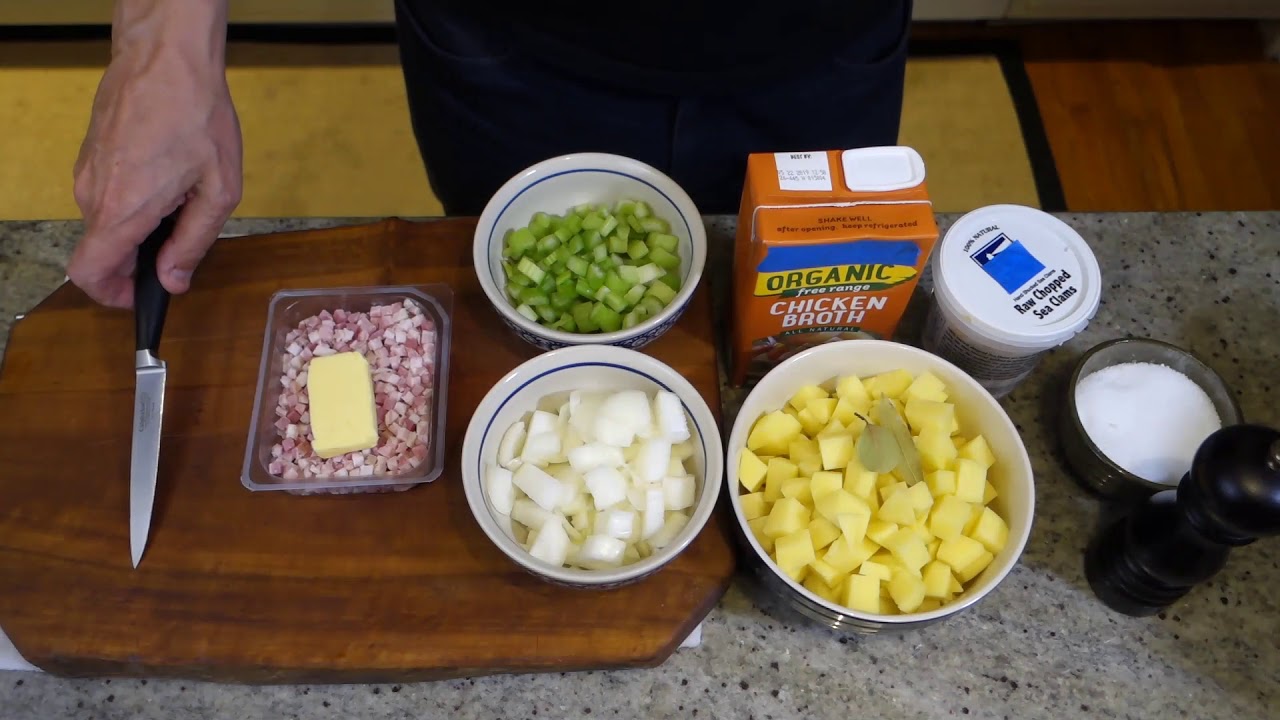Rhode Island clam chowder: Can it be frozen?
Rhode Island clam chowder, with its rich and creamy texture, is a beloved seafood soup that many people enjoy. But what if you find yourself with leftovers and are wondering if it’s possible to freeze this delicious dish for later consumption? The answer is yes, you can freeze Rhode Island clam chowder. However, there are several factors to consider and steps to follow to ensure that the chowder maintains its flavor and texture when thawed and reheated.
Factors to consider when freezing clam chowder
Before freezing clam chowder, it is important to take into account a few factors. First, consider the ingredients used in the chowder. Fresh clams, potatoes, onions, and other vegetables may freeze well, but certain dairy products, such as cream or milk, may separate or become grainy when frozen and thawed. Additionally, the overall quality of the chowder may be affected, as freezing can alter the texture and flavor.
Step-by-step guide to freezing clam chowder
To freeze clam chowder, follow these simple steps. Begin by allowing the chowder to cool completely in the refrigerator. Once cooled, transfer the chowder into airtight containers or resealable plastic bags, leaving some space at the top to allow for expansion during freezing. Seal the containers or bags tightly and label them with the date of freezing. Place the containers in the freezer and ensure they are placed in an upright position to prevent leakage.
Best containers for freezing chowder
Choosing the right containers for freezing clam chowder is essential to maintain its quality. Opt for containers or bags made specifically for freezing, as they are designed to prevent freezer burn and protect against odors. Glass or plastic containers with tight-fitting lids are ideal, as they prevent air from entering and freezer burn from occurring. Freezer-safe plastic bags are also a convenient option, as they can be stacked and take up less space in the freezer.
Properly packaging clam chowder for freezing
When packaging clam chowder for freezing, it is crucial to remove as much air as possible to prevent freezer burn. If using containers, fill them almost to the top, leaving only a small gap for expansion. Press plastic wrap directly onto the surface of the chowder to minimize air exposure. If using plastic bags, squeeze out any excess air before sealing them tightly. Double-bagging is also recommended for added protection.
Safe storage duration for frozen chowder
While clam chowder can be safely stored in the freezer, it is best to consume it within three to four months for optimal quality. Over time, the texture and flavor may degrade, so it is advisable to consume the frozen chowder as soon as possible for the best experience.
Thawing frozen Rhode Island clam chowder
To thaw frozen Rhode Island clam chowder, transfer the container or bag to the refrigerator and allow it to thaw slowly for 24 to 48 hours. Avoid thawing at room temperature, as this can lead to bacterial growth. Once thawed, do not refreeze the chowder, as this can further affect its quality.
Reheating techniques for frozen chowder
When reheating frozen clam chowder, it is important to use gentle heat to prevent curdling or separating. Place the thawed chowder in a pot and warm it over low to medium heat, stirring occasionally to distribute the heat evenly. Avoid boiling the chowder, as this can cause the ingredients to break down and alter the texture.
Maintaining the flavor and texture of thawed chowder
To maintain the flavor and texture of thawed clam chowder, refrain from overcooking during reheating. Heating the chowder just until it is hot is sufficient. Additionally, stirring the chowder gently while reheating can help distribute the heat evenly without breaking up the ingredients.
Tips to prevent freezer burn in clam chowder
To prevent freezer burn in clam chowder, it is important to ensure airtight packaging as mentioned earlier. Properly sealing the containers or bags and removing as much air as possible will minimize the chances of freezer burn. Additionally, storing the chowder at the back of the freezer, where the temperature is most stable, can further prevent ice crystals from forming and causing freezer burn.
Potential risks of freezing clam chowder
While freezing clam chowder is generally safe, it is important to be aware of potential risks. Freezing can affect the texture and flavor of the chowder, resulting in a slightly different taste and consistency when thawed. Dairy-based chowders may be more prone to separation or graininess after freezing and require additional care during reheating. However, despite these risks, freezing can still be a convenient way to preserve leftover clam chowder for future enjoyment.
Alternative methods to preserve clam chowder
If you prefer to preserve clam chowder without freezing, there are alternative methods available. One option is to can the chowder using a pressure canner, following proper canning guidelines to ensure safety. Another option is to reduce the recipe and make a smaller batch of chowder that can be consumed within a few days. This way, you can enjoy the freshness and flavor of the chowder without the need for freezing or long-term storage.





